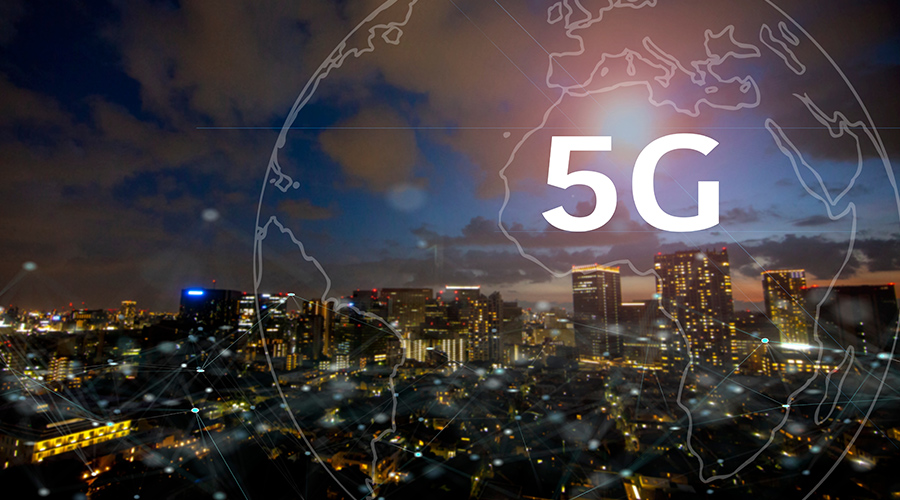The emergence of 5G technology marks a new era in communication and connectivity. As the latest generation of mobile networks, 5G promises unprecedented speeds, ultra-low latency, and massive device capacity. This revolutionary technology will not only enhance our current digital experiences but also unlock the potential for groundbreaking applications across various industries. Here, we will understand the capabilities of 5G and its impact on industries, along with the challenges to be considered to determine its full potential for better usage.
Understanding 5G Technology
A. What is 5G?
The fifth generation of mobile networks, succeeding 4G LTE. It is a collection of new technologies and standards to improve mobile connectivity.
B. Key Features of 5G
Enhanced Mobile Broadband (eMBB): High data rates, providing faster download and upload speeds.
Ultra-Reliable Low Latency Communications (URLLC): Near-instantaneous data transfer, enabling real-time applications.
Massive Machine Type Communications (mMTC): Connecting many devices simultaneously is ideal for IoT.
The Impact of 5G on Various Industries
A. Telecommunications
Enhanced mobile experiences: Faster streaming, smoother video calls, and improved gaming experiences. Network slicing: Customizable network services tailored to specific user requirements.
B. Healthcare
Telemedicine: Improved video consultations, remote patient monitoring, and better access to healthcare.
Robotics and surgery: Real-time data transfer enables remote surgeries and more precise robotic assistance.
C. Transportation
Autonomous vehicles: 5G's low latency enhances vehicle-to-vehicle communication, improving safety and efficiency.Smart cities: Enhanced infrastructure communication optimizes traffic flow, reduces congestion, and lowers emissions.
D. Entertainment
Immersive experiences: 5G enables high-quality AR and VR experiences, transforming gaming, sports, and live events.
Cloud gaming: Ultra-fast speeds and low latency make cloud gaming more accessible and enjoyable.
E. Manufacturing
Smart factories: Real-time communication and data analysis improve efficiency, reduce downtime, and optimize production.
Remote operations: Remote monitoring and control of machinery reduce on-site staff requirements and increase safety.
Challenges in Implementing 5G
A. Infrastructure
Dense network deployment: 5G requires more base stations and small cells, which can be expensive and time-consuming to install.
Spectrum allocation: Efficient use of the radio spectrum is essential for optimal 5G performance.
B. Security and Privacy
Increased attack surface: With more connected devices, 5G networks are more vulnerable to cyber attacks.
Data privacy: Ensuring the privacy of user data in a hyper-connected environment is crucial.
C. Environmental and Health Concerns
Energy consumption: 5G networks demand more energy, raising concerns about their environmental impact.
Health risks: Public concerns about potential health risks from 5G radiation must be addressed.
The Future of 5G and Connectivity
A. Beyond 5G: 6G and the Future
Continued research into advanced communication technologies, such as terahertz frequencies and AI-powered networks. 6G aims to offer even faster speeds, higher capacity, and greater energy efficiency.
B. Global Adoption and Impact
Economic growth: 5G deployment is expected to create millions of jobs and contribute significantly to global GDP.
Digital divide: Ensuring equal access to 5G technology is essential to prevent widening the digital divide C. Transforming Everyday Life.
Internet of Senses: The fusion of 5G, IoT, and AI will enhance interaction between humans and technology, making everyday experiences more immersive and personalized.
Smart homes: 5G connectivity will allow seamless integration of smart devices, improving energy efficiency, security, and convenience.
D. Bridging Rural-Urban Connectivity Gaps
Exploring network coverage: By investing in 5G infrastructure, we can decrease the digital differences between urban and rural areas, as this will offer high-speed internet access to underserved areas.
Perking up local economies: With access to 5G connectivity in rural areas, new opportunities for local businesses will increase. They can get a better quality of life.
Conclusion
The way we engage with the outside world and communicate with one another will be transformed entirely by 5G technology. As businesses and consumers adapt to this new era of connectivity, we may expect big changes in various areas, from healthcare and transportation to entertainment and manufacturing.
However, addressing the challenges associated with 5G implementation, such as infrastructure, security, and equitable access, is crucial to harness its potential fully. To ensure that everyone enjoys the advantages of 5G technologies as we look to the future of connection, it is crucial to engage in research, development, and cooperation.





